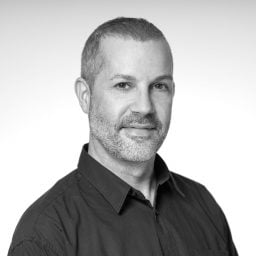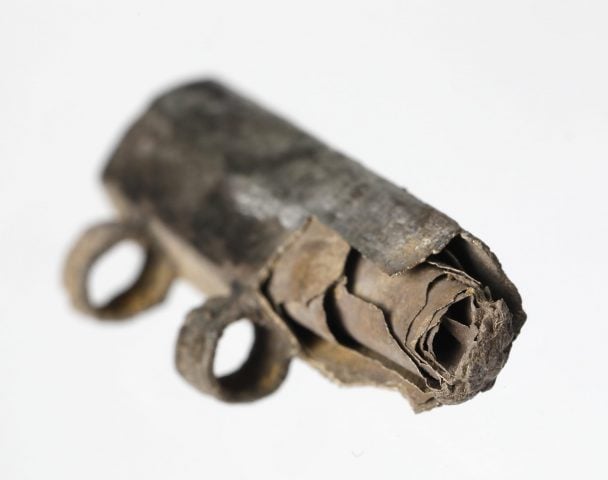Art World
Collector Alex Abedine Balances His Life in Law With the Joyful Chaos of Art
Already an habitué of New York's galleries, the collector reveals what he's excited to see during the Frieze Week fairs.
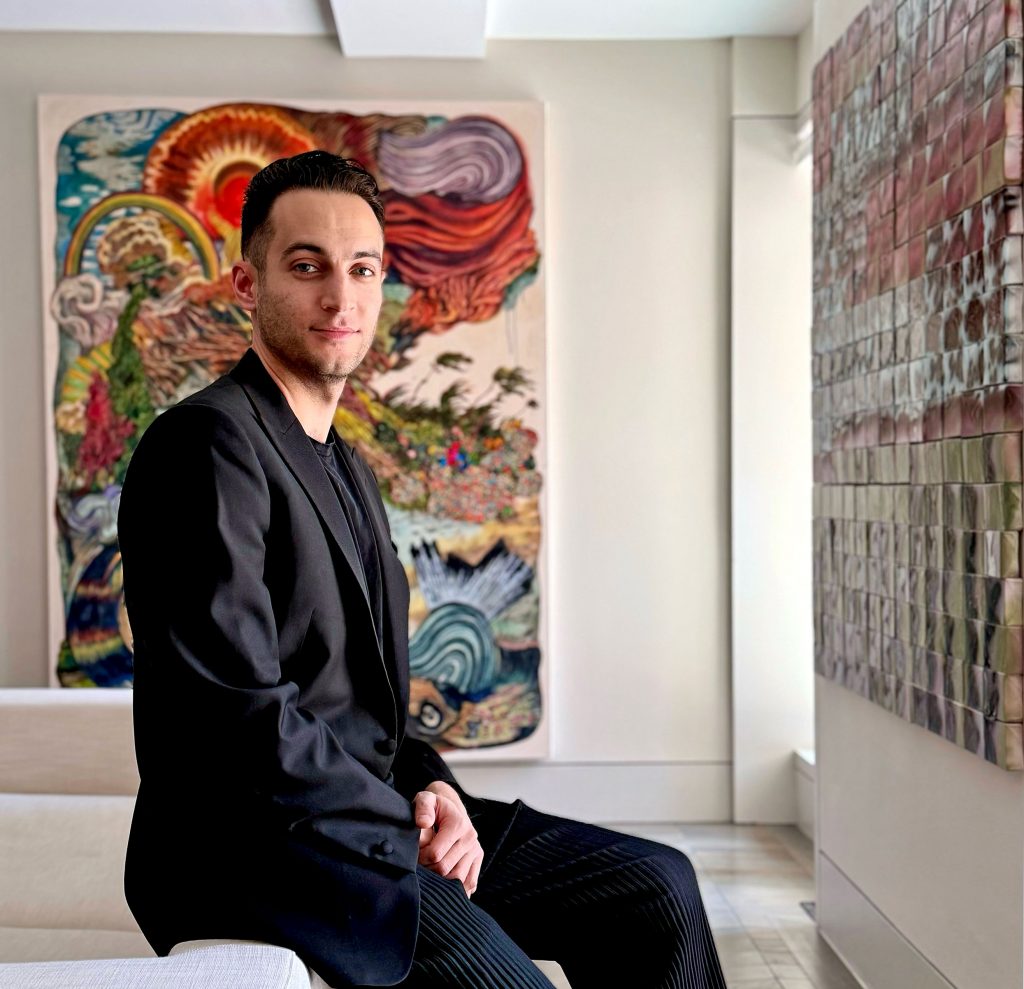
Judging by the motley patchwork of artworks jostling for attention on Alex Abedine’s walls, it’s pretty clear that the young collector is relishing his newfound role as a champion of rising artists.
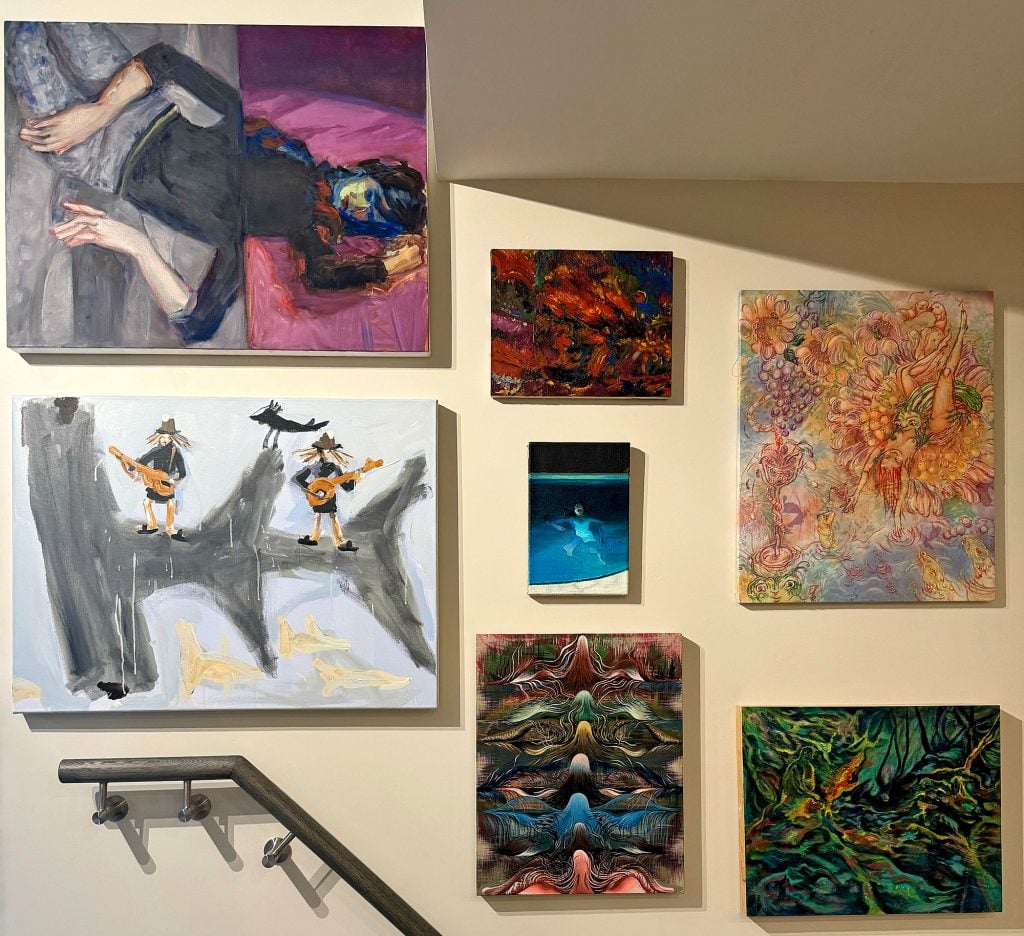
A view of the crowded artworks at Alex Abedine’s Tribeca home.
“It’s a constant dance around here,” he laughed, “moving things around and rehanging them as new things come in.” He recalled recently mounting a painting by Farley Aguilar, a behemoth measuring eight by nine feet. “They had to disassemble the stretcher frame on the street outside my building in Tribeca and carry it, with the canvas, up the stairs and reassemble it on my dining room floor. Now it can never leave this apartment.”
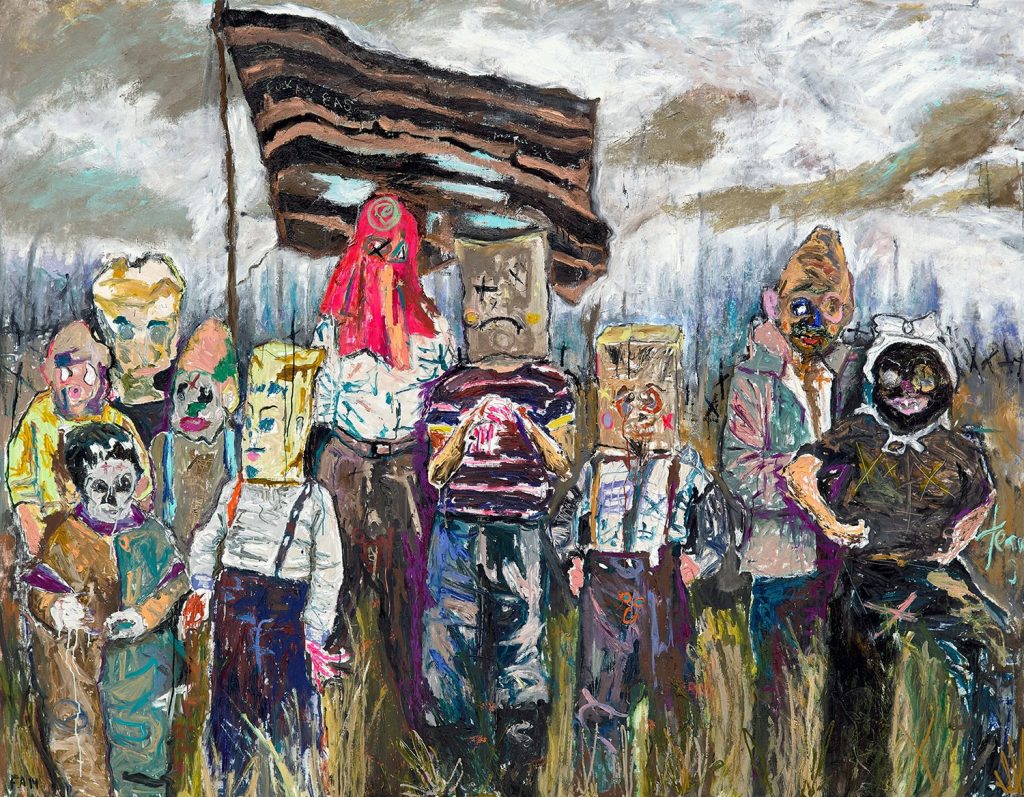
Farley Aguilar, The Flag (2014). Courtesy of Alex Abedine.
For Abedine, the lawless nature of collecting acts as a freewheeling flip side to his rather staid life in law. “When I graduated law school, I started working for a big white-shoe law firm,” he said. “I was surrounded by people who were not really interested in art or the creative side of life. I’ve always wanted to do something a bit different. I saw collecting as a kind of escapism. I sought it out as a counterbalance to my life as a lawyer, and it rapidly took on a life of its own, clearly.”
Abedine’s first purchase was a James Rosenquist diptych of prints. “It’s classic Rosenquist, with spaghetti and a car radiator grill. That was my gateway drug into collecting.” Once inside the gate, his penchant for Pop gave way to abstract art. “Abstraction is not the first thing that collectors typically gravitate toward, but I think as my tastes have evolved, I’ve begun to understand the point of it,” he said. “It’s about what you as the viewer bring to the party. It’s a dialogue with the artist. I love that interplay.”
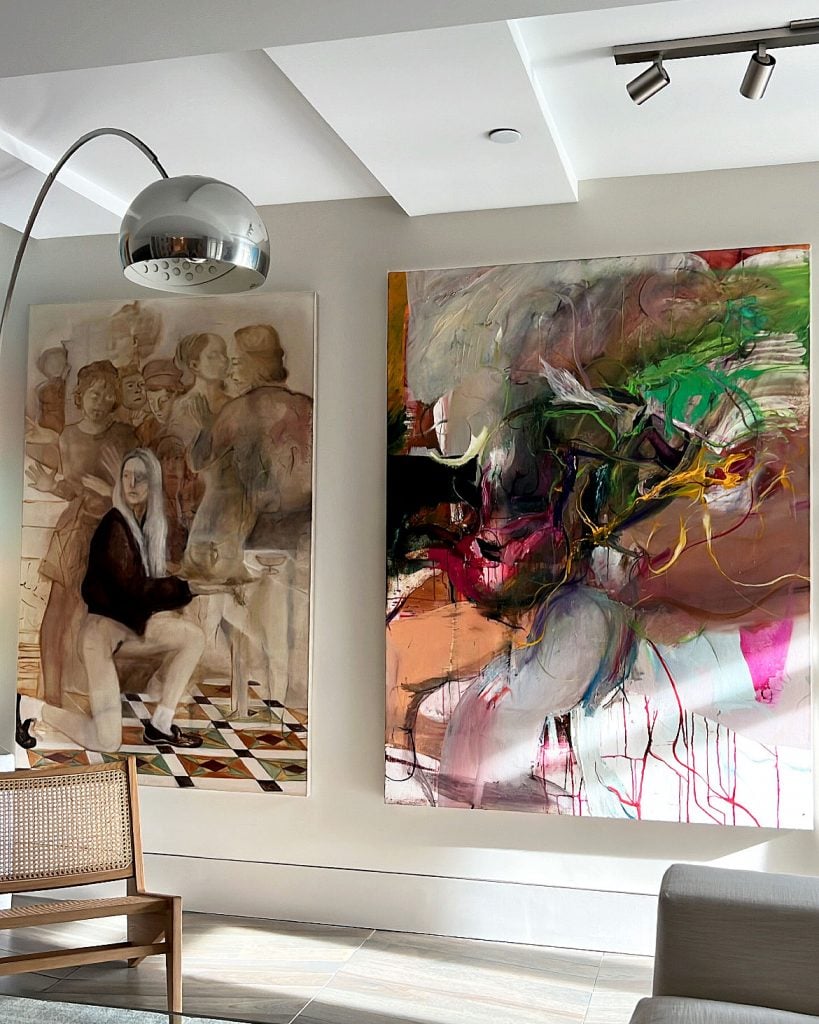
Alex Abedine’s Tribeca home with Joanna Woś’s Untitled (2022), left, and Grace Carney, Paradise (2022), right. Courtesy of Alex Abedine.
He’s especially enamored with an abstraction by Grace Carney. “It’s fascinating!” he raved. “The longer you look at it, the more it changes and new things emerge.” He said he discovered the artist on Instagram in a bout of “late-night sleuthing on social media.” When he noticed she was part of a group show at PPOW in New York, with whom he had no prior rapport, he “cold messaged” the gallery, which has since become one of his regular haunts, joining other go-to galleries Tara Downs and Alexander Berggruen in New York and Nazarian Curcio in L.A.
Abedine has already begun loaning out works to various institutions, including a “beautiful Spencer Sweeney self-portrait” for a retrospective at the Brant Foundation’s Connecticut location. He’s also loaned a painting by Judy Bowman to the Museum of Contemporary Art Detroit, where the collage artist had a solo exhibition in late 2022. And he recently gave a gift of several works by emerging artists to the Ogunquit Museum of American Art in Maine, where he’s on the collector’s council, a role he formerly served at the Guggenheim Museum.
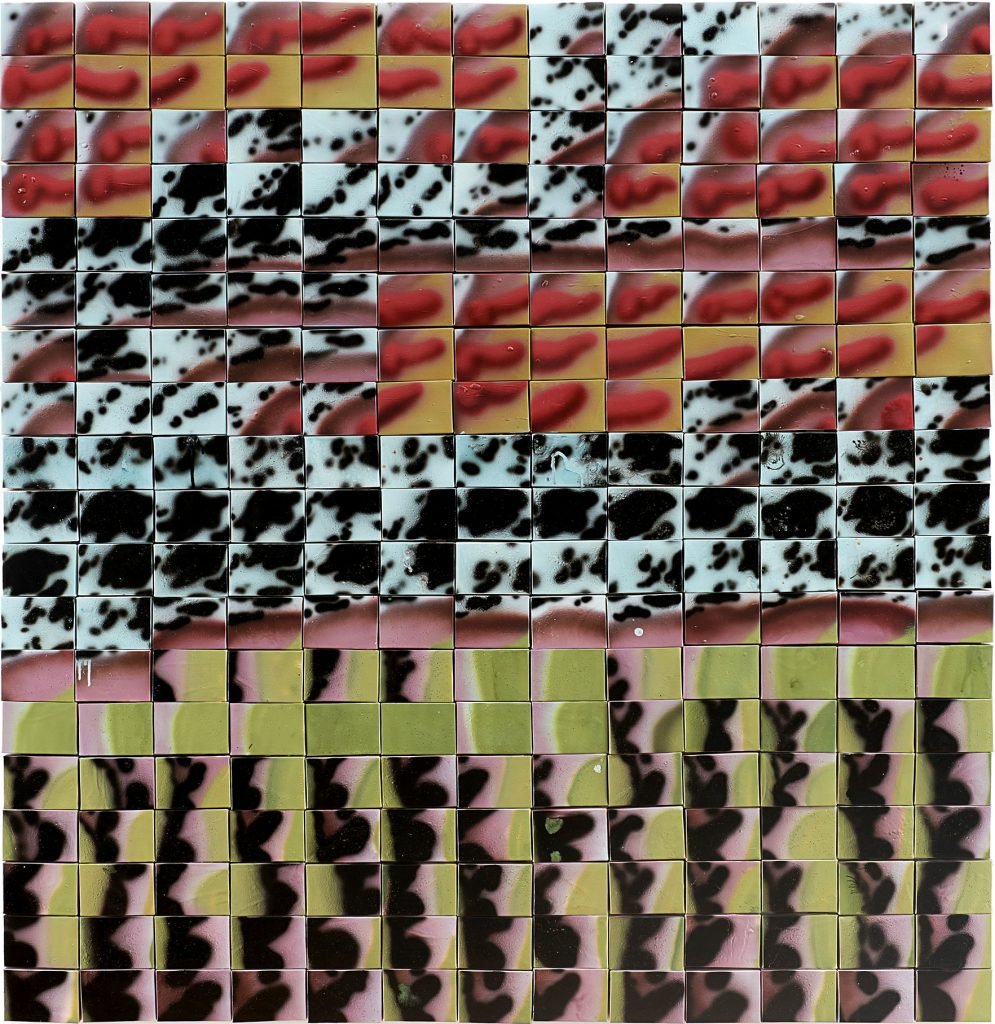
Evian Wenyi Zheng, 101 (2023). Courtesy of the artist and Tara Downs, New York.
He’s on a roll now and the names are coming fast and furious: Evian Wenyi Zheng (“She painted like 200 small canvases in one big canvas”); Charles Snowden (“I bought a ceramic hand of his that casts a shadow that’s part of the work. No one does stuff like that.”); Ken Gun Min (“Ken does embroidery on canvas, which are in the spirit of Chinese watercolor. They’re so ethereal and fresh.”); Carrie Rudd (“She’s a young artist at Polina Berlin who embraces abstraction through a very personal lens.”); Ryan Schneider, who shows with Almine Rech and the Pit in L.A. (“He uses a chainsaw on Torrey pine wood. I mean, this man is in the California desert with a chainsaw chewing up pine.”); and Eli Ping (“I’m absolutely floored by this sculpture. It’s almost like Giacometti, or an inverse Fontana.”).
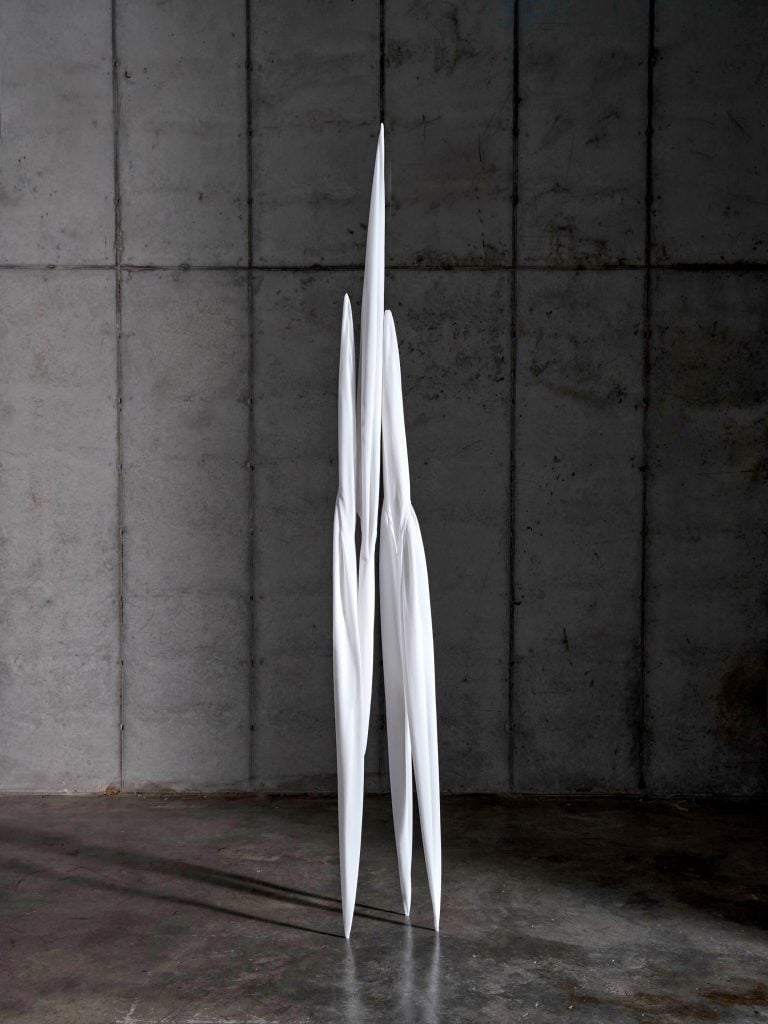
Eli Ping, Monocarp (2023). Courtesy of the artist, and Sea View, Los Angeles and Bernheim Gallery, London/Zurich.
After galleries, art fairs are next in his charm offensive. Last year he attended Art Basel in Paris, though he typically prefers the rising-artist milieu that he finds at smaller fairs. Next on his list are the upcoming New York fairs: NADA, Independent, and Frieze, where he’s “excited to see Persian artist Roksana Pirouzmand. She’s part of François Ghebaly’s gallery on the Lower East Side. Her work is marvelous.”
Abedine said he keeps up with Persian artists—including Amir Fallah and Aryana Minai, who just showed at Tara Downs—as his family immigrated to New York from Iran in 1984. “I have several works by Iranian artists; it’s great to see them becoming more recognized,” he said. “But my family is not at all interested in collecting, although they do find ways to help me out. Since I’m clearly in need of storage, my parents keep some of my works at their place. My dad was here last week picking up some paintings, but I don’t know if they understand that it’s not a gift and I’ll ask for them back at some point.”

